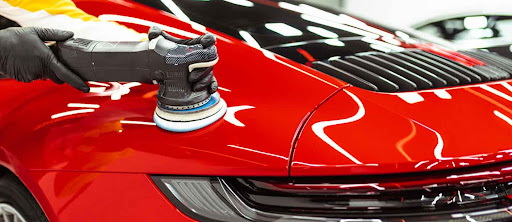Sealants and waxes might rapidly become perplexing when it comes to cleaning supplies. Particularly, paint protection like ceramic spray coating, glazes, sealants, and waxes are a crucial step in the detailing process because, after your car has been washed, it is this protection that prevents contaminants and impurities from the road, such as dirt, tar, bug guts, and bird poop, from bonding to your car and causing it to become dirty once more.
A decent wax or sealant, and other products like Clay Bar for Car Cleaning can dramatically elevate the appearance of your automobile by enhancing the sheen of the paint, cleaning it and its capacity to resist water, making it one of the most crucial components from an aesthetic perspective as well.
What precisely is the distinction between car wax and sealant?
What They Both Share
Most motorists who don’t enjoy detailing frequently confuse auto wax with paint sealant and vice versa. Although fairly close, they aren’t exactly the same.
The general purpose of both products is to construct a shield over the clear coat and shield it from the elements.
Your car will be subjected to UV rays, sweltering heat, a lot of wetness, snow, salt, and mechanical particles like dust, sand, gravel, and dirt depending on where you live and how you use it. Heck, we may even include odd chemicals, bird droppings, and tree sap on the list.
Car wax: What is it?
The primary component of standard automobile wax is “Carnauba wax,” which is produced naturally by a palm tree that is native to northern Brazil. Its purpose is to cover the palm leaves, shielding them from moisture and extreme heat.
Due to the fact that natives have produced food and medicine from it for thousands of years, it is also known as the “Tree of Life.”
Carnauba wax can maintain the paint on your automobile for a considerable period of time, even if you can’t drink it to get younger.
The unprocessed carnauba wax is extracted as hard flakes or as a powder. To make a product for your skin that is simple to use, it is combined with varying amounts of other waxes, oils, and petroleum derivatives.
- Typically, car waxes are divided up based on their constituents.
- Natural waxes typically include no more than 30% of extracted carnauba wax. They last the shortest yet offer the finest effects in terms of colour and gloss.
- Paint sealers and synthetic waxes are essentially interchangeable
- They are fully synthetic and comprise polymers that adhere to surfaces more effectively and create a solid barrier.
- These don’t provide that deep, warm shine but can endure for up to a year.
- Last but not least, cleaner waxes clean, shine, and preserve the paint of your automobile all at once. To get the clear coat ready for the final waxing, they contain both cleaning agents and fine abrasives.
Additionally, waxes can be categorised according to state
1.The most natural carnauba is usually found in paste waxes, which are more costly but can be more difficult to apply. Due to their composition, they give the most attractive finish but also fade most quickly.
2.The most durable waxes are typically liquid ones. They are more durable because they include more synthetic materials. However, its effective implementation necessitates hard effort and efficiency.
3.The simplest waxes to apply are spray waxes, however they only last for a few weeks at most. They are often inexpensive and suitable for touch-ups, daily usage, or new automobiles that already have high-quality paint and finishes.
5.A crucial caveat: The aforementioned does not necessarily apply to every product on the market. The composition of a thing can exist independently of its physical condition.
Car Sealant: What is it?
Between waxes and sealants, car sealants often offer a perfect middle ground between durability, aesthetic appeal, and – perhaps most crucially – simplicity of application.
In contrast to wax, automotive paint sealants are often synthetic man-made chemicals that are sold in liquid form. In order to get quick and noticeable results, certain products merely need to be sprayed on and then promptly washed off. This makes them simple to apply using a sprayer bottle or an applicator pad.
A sealant may endure for weeks or even months and is typically far more resilient than a wax. They give significantly greater protection against road filth and are far more heat, UV, and detergent resistant. The disadvantage is that they fall short of a decent wax’s sheen and gloss.
The Benefits
- Sealants stay longer than waxes—in some circumstances, considerably longer.
- It could be less work to apply and take off than wax.
- Facilitates simpler automobile maintenance. Simply wash your automobile once a week to guarantee that dangerous particles are eliminated.
The Drawbacks
- Very pricey. Specialists must apply sealants, particularly ceramic coatings.
- If you apply the sealant incorrectly, it may be difficult to remove it.
- The longer curing time lengthens the application process. Some ceramic coatings require a 24-hour curing period.

